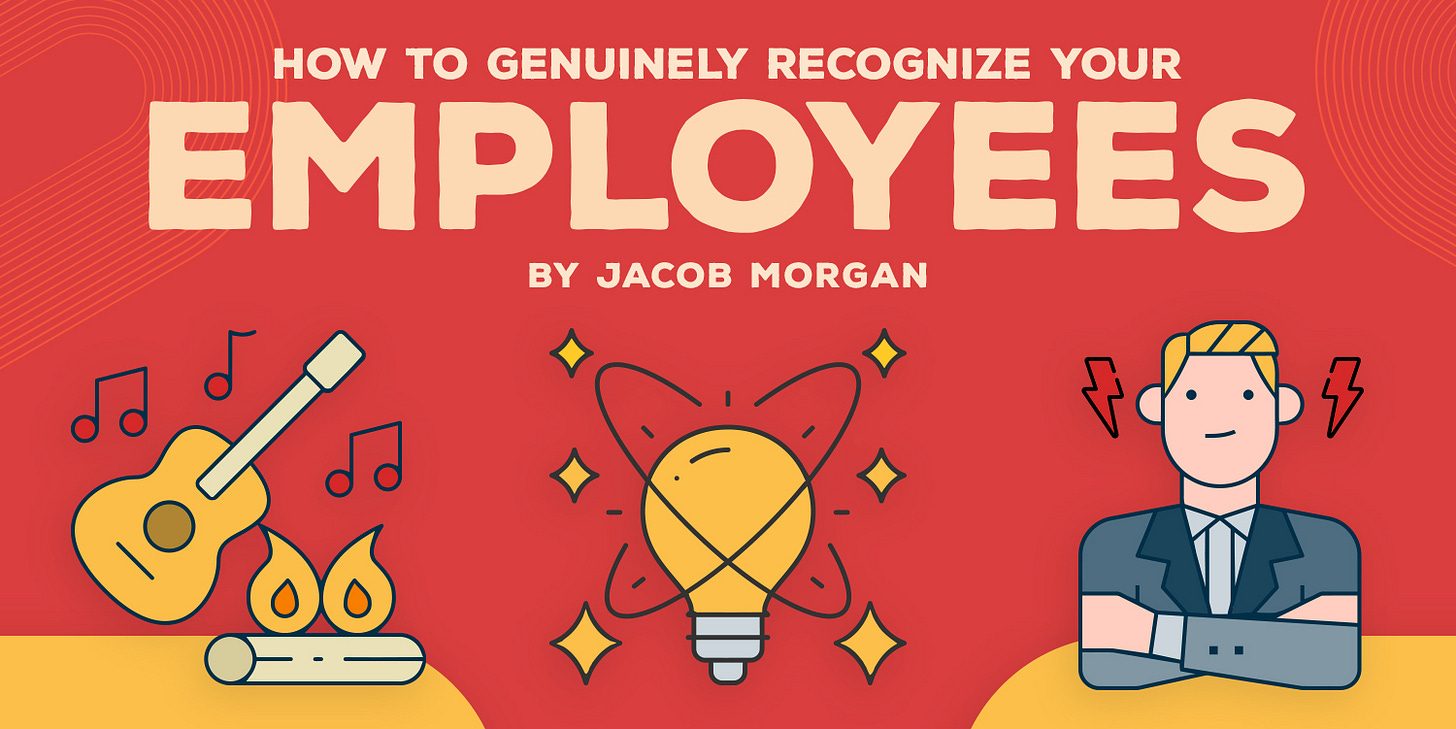How to Genuinely Recognize Your Employees
3 strategies you can implement right away!
Greatness Graphics are visuals which distill leadership concepts and ideas into something fun, easy, and practical!
This is a free post, consider becoming a subscriber to get access to my best content and latest thinking, including exclusive videos, leadership research, insights, and more!
Employee recognition is a fundamental aspect of effective leadership and a key component of a healthy workplace environment. It's the acknowledgment of an individual or team's behavior, effort, or business result that supports the organization's goals and values. It's about creating a positive work environment and showing employees that their work is valued and appreciated. Here are three reasons why it's important for leaders to recognize their employees:
Improves Employee Engagement: When employees feel recognized for their work, they are more likely to be engaged in their tasks. According to a study by Gallup, employees who do not feel adequately recognized are twice as likely to say they'll quit in the next year. In contrast, employees who do feel recognized are more likely to put in extra effort and are more engaged in their work.
Boosts Employee Morale and Productivity: Recognition can significantly boost employee morale, leading to increased productivity. A study by the Harvard Business Review found that 40% of employed Americans would put more energy into their work if they were recognized more often. This shows that recognition can directly impact an organization's bottom line by increasing the output of its employees.
Promotes a Positive Workplace Culture: Regular recognition promotes a positive workplace culture. It shows employees that their hard work is valued and appreciated, which can foster a sense of belonging and community. According to a study by Deloitte, organizations with a strong recognition culture have 31% lower voluntary turnover than companies with poor recognition cultures.
How do you actually recognize your employees? Check out the infographic below for 3 simple and effective approaches:







